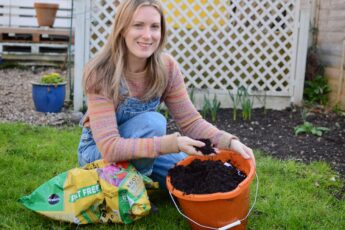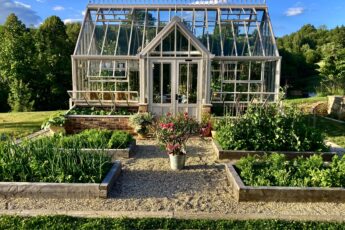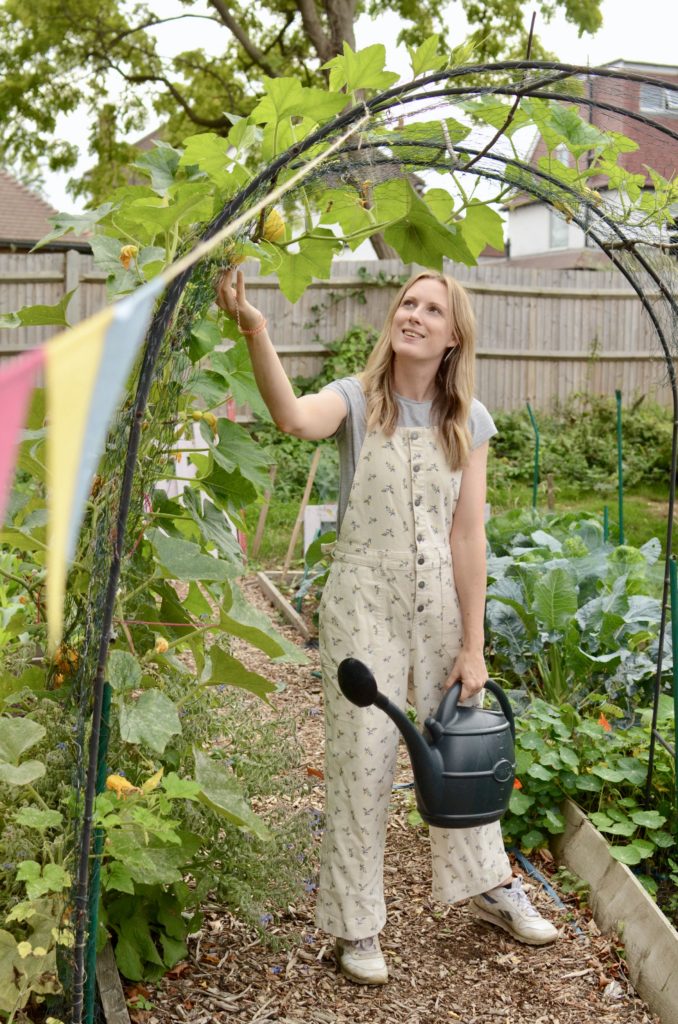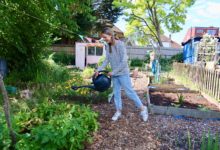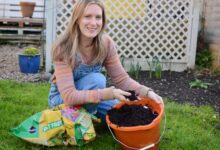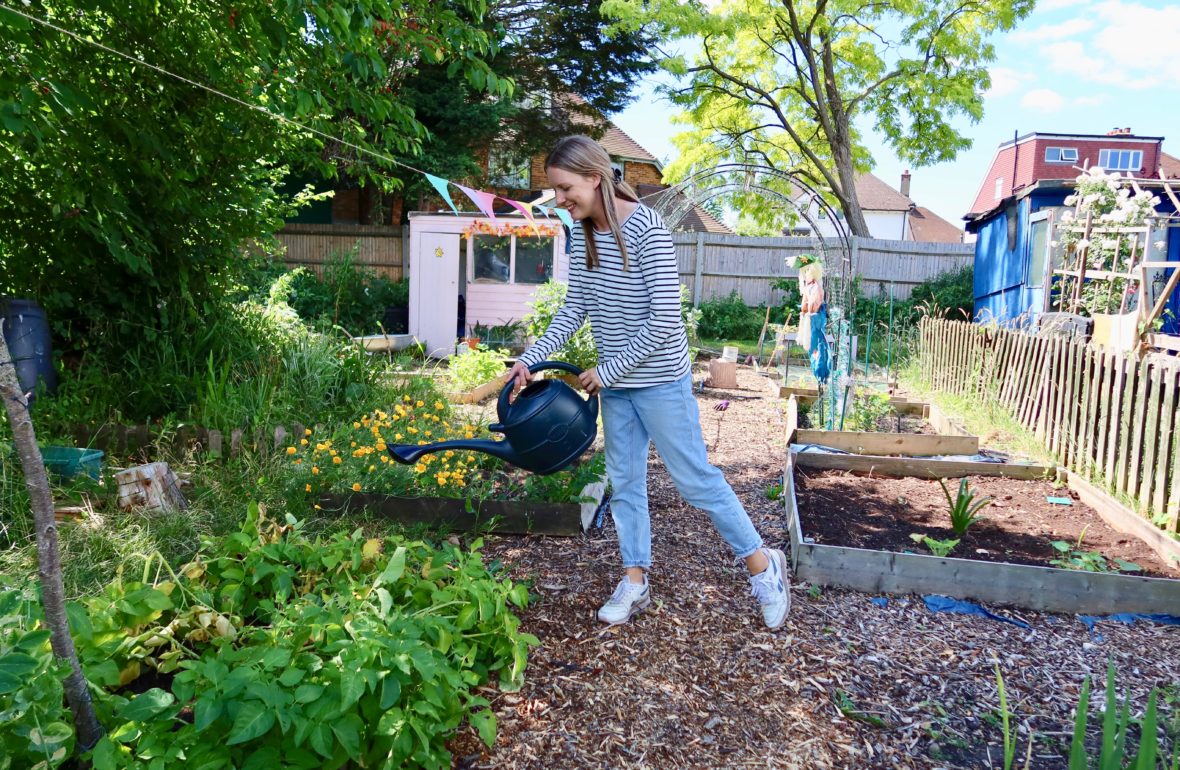
When you start vegetable gardening, how to water your allotment plot might be one of the last things on your mind. However, watering is one of the most important things when growing vegetables. Vegetables are hungry plants and need lots of drink to stay healthy and grow strong.
Depending on your allotment plot facilities, watering might be fairly easy for you or incredibly difficult. If you’re lucky enough to have running water supplied by the council, you might want to invest in a hose so you can water all your plot with ease. If not, then it’s time to start collecting rainwater, which is actually better for your plot than tap water thanks to all the natural occurring minerals in it.
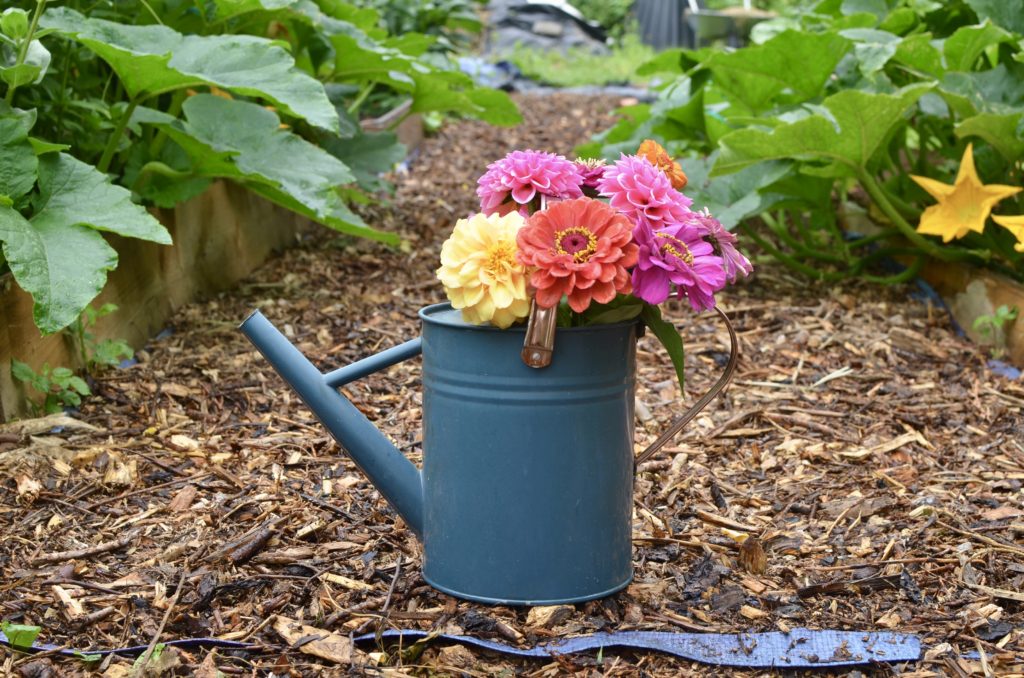
Here are some of my top tips for watering your allotment plot.
- Use rainwater
Rainwater is the best thing for your plants! Collect it in a giant water butt or, failing that, just leave some watering cans and buckets about to collect it instead. Make sure you cover them up to stop the water evaporating in the sun!
You can reuse washing up water and even bath water in your garden too. The actual name for it is ‘grey water’ and it can be used on everything in the garden. What a great way of reusing water!
2. Use the right watering can head.
Newly sown seeds and tiny seedlings need a smaller, sprinkler head so you don’t wash them away or damage them! Larger crops like courgettes or pumpkins need a larger hole to ensure enough water reaches the roots and doesn’t end up all over the leaves instead!
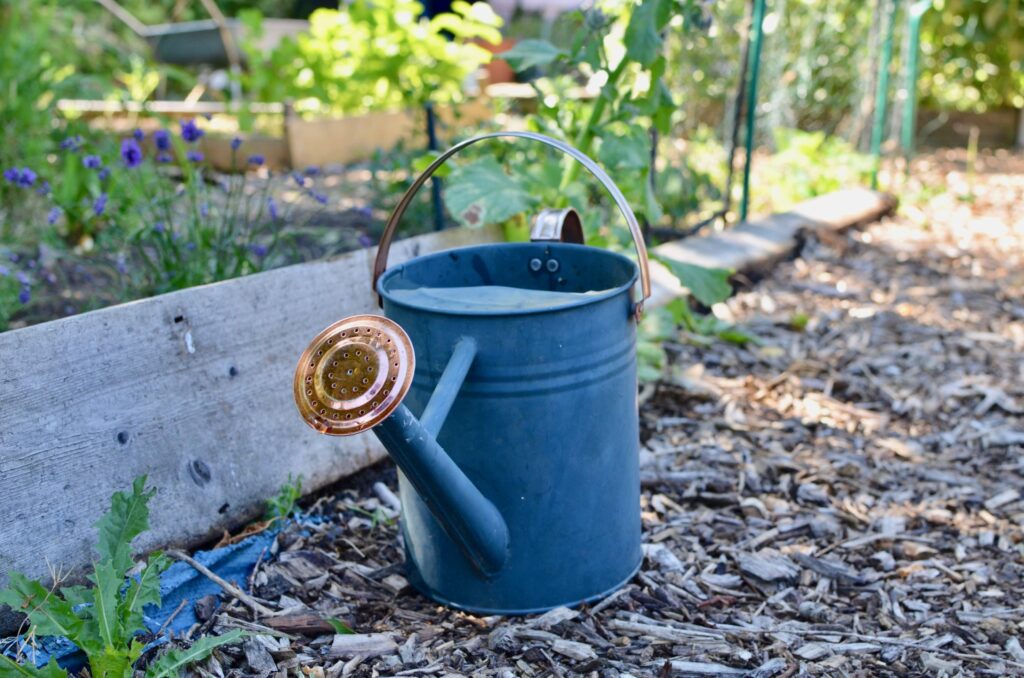
3. Water the roots, not the leaves.
Water should be poured directly onto the soil where possible, not over the top of the plant. There are a few reasons for this:
- Water on leaves will evaporate in hot weather, becoming useless and a waste.
- Water that splashes the soil onto the plant can spread diseases such as the dreaded blight!!
- Plants are hungry and watering roots will ensure the plant gets enough to drink!
4. Water twice in hot weather.
The first time you water, you will wet the surface of the soil and not much else. If you wait 5-10 minutes and then water again, the water will be absorbed into the soil and reach the plants roots, which is what you want! Remember that on very hot days, water on the soil will evaporate very quickly!
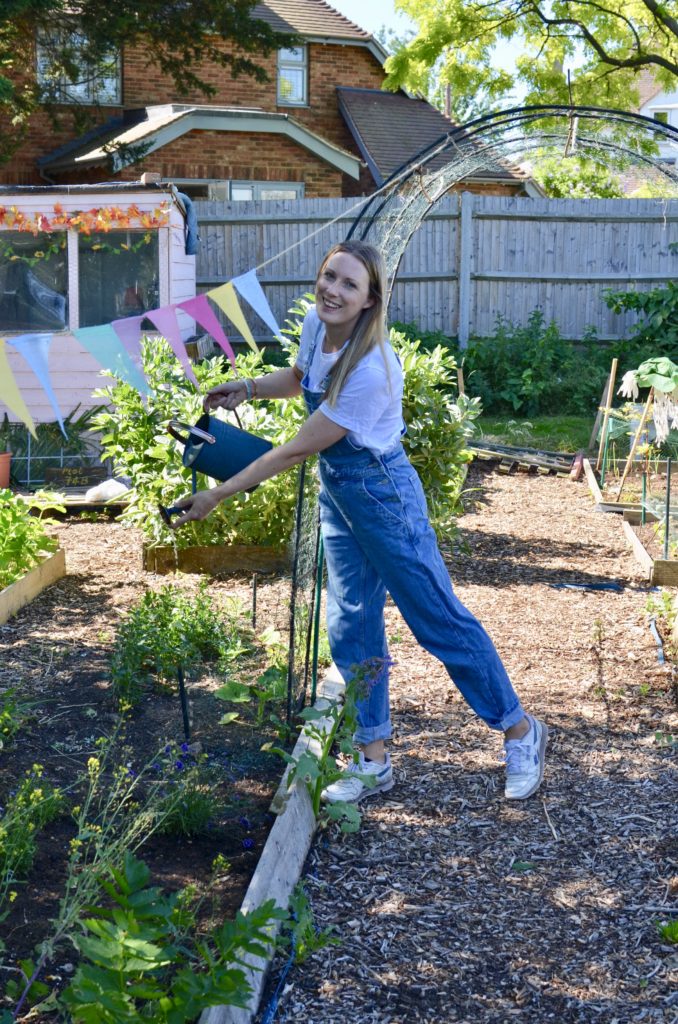
5. Water early morning and/or later evening
In the summer, watering in the middle of the day is going to be pointless. It’ll be too hot and the water will very likely just be evaporated straight away.
If you had to choose between early morning or late at night, go for the early morning. Watering late at night will attract slugs and snails who will munch through your crops in the cooler temperatures. If you water in the morning, it’ll be too hot for them to come out later on.
However, if you can only water late evening, then do that. Better for your crops to have a good drink than to not have anything!
There you go, did you know that watering is an art? Nope, neither did I when I started. But the more you do it, the more you’ll realise that following these simple tips will give your crops the best chance!



